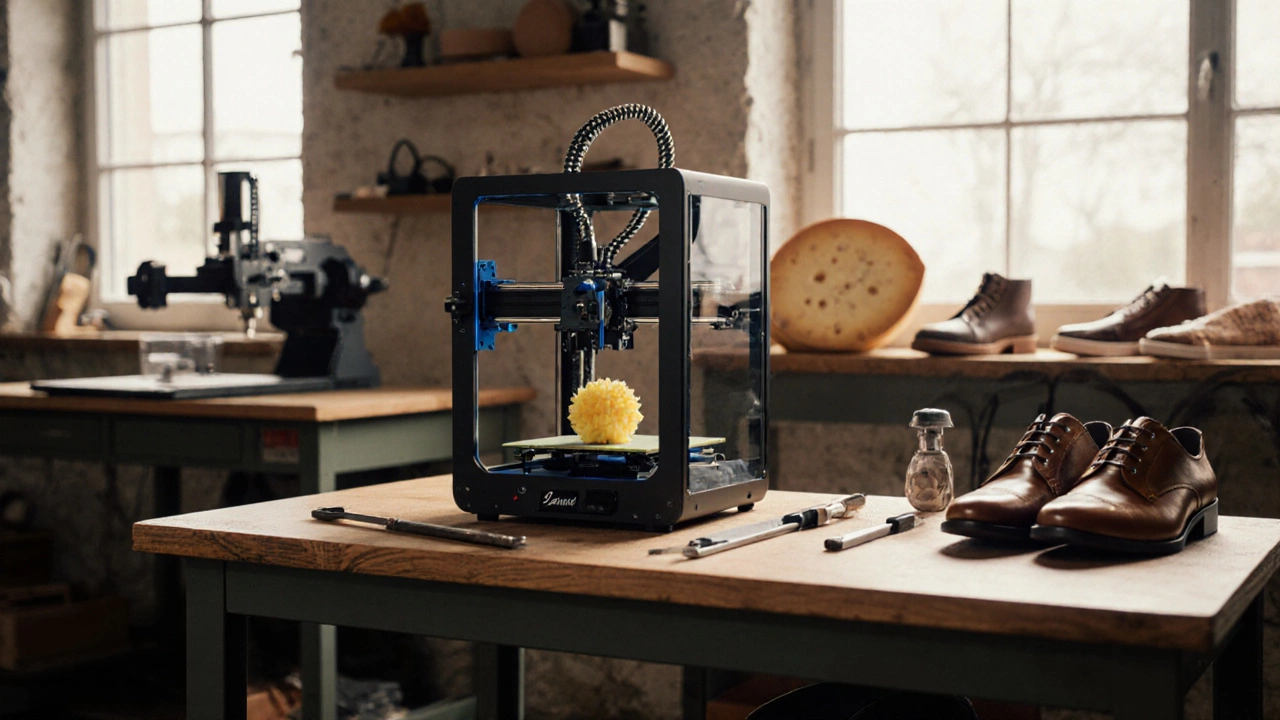Understanding Small Scale Production: Definition, Benefits & Examples

Small Scale Production Cost Calculator
Calculate Your Production Costs
Compare small scale vs. large scale production costs based on your volume and specific parameters. Understand the cost trade-offs mentioned in the article.
Cost Comparison
Small Scale Production: £0.00
Large Scale Production: £0.00
Potential Savings: £0.00
Key Takeaways
- Small scale production means making goods in limited quantities, often for niche markets or rapid prototyping.
- It offers lower upfront costs, faster iteration, and greater flexibility than mass production.
- Modern technologies like 3D printing and Industry 4.0 tools boost efficiency for small runs.
- Typical challenges include navigating regulations and managing a reliable supply chain.
- A clear step‑by‑step plan helps turn an idea into a viable small‑scale operation.
What is Small Scale Production?
When discussing manufacturing, small scale production is a method of making goods in limited quantities, often tailored to niche markets or rapid prototyping. It sits between handcrafted one‑off work and the high‑volume lines you see in big factories. The hallmark is a production volume that typically stays below a few thousand units per year, though the exact cut‑off varies by industry.
Small scale production lets entrepreneurs test market demand without the massive capital outlay required for mass manufacturing. It also gives space for customization-think of a boutique shoe brand offering a handful of colourways that change each season.
Types and Real‑World Examples
Three common flavors of small scale production often overlap:
- Micro production is the creation of very low‑volume batches, usually under a hundred units, for highly specialized applications. A startup that prints custom medical implants for a single hospital uses micro production.
- Batch manufacturing refers to producing a set amount of product before re‑tooling for the next batch, enabling flexibility while keeping costs manageable. A craft brewery brewing seasonal ales in 5,000‑liter batches exemplifies this.
- Craft manufacturing blends artisanal techniques with modest automation, often producing goods with a strong brand story. Handmade leather goods that employ a small sewing line illustrate craft manufacturing.
Across sectors, you’ll find small scale production in electronics (limited‑run IoT devices), food processing (artisan cheese), textile (custom sportswear), and even automotive (low‑volume electric sports cars).

Why Choose Small Scale Production?
Several tangible benefits drive businesses toward this model:
- Cost control: Capital equipment can be rented or shared, reducing the need for a huge upfront investment.
- Speed to market: Shorter tool‑change times mean you can launch new products faster than a traditional assembly line.
- Risk mitigation: Producing a few hundred units lets you validate demand before scaling up.
- Customization: Customers increasingly expect personalised options, which small runs can accommodate.
- Environmental impact: Lower material waste and the ability to use sustainable sourcing appeal to green‑focused consumers.
For a tech startup, these advantages often outweigh the perceived prestige of mass production. They can iterate on hardware designs, collect user feedback, and refine the product before committing to a larger factory.
Challenges to Watch Out For
Running a lean operation isn’t without bumps:
- Regulatory compliance can be tricky, especially in food, pharma, or medical device sectors where certification thresholds don’t shrink with batch size.
- Supply chain reliability: Small orders may not qualify for volume discounts, making material costs higher.
- Scaling hurdles: Transitioning from a 200‑unit run to 20,000 units often requires new tooling and process redesign.
- Quality consistency: Maintaining tight tolerances without the statistical buffering of large volumes demands disciplined process controls.
Addressing these issues early-by partnering with experienced suppliers and investing in quality management-helps keep the operation smooth.
Tech That Powers Modern Small Scale Production
Recent advances have blurred the line between craft and factory:
- Additive manufacturing (3D printing) lets you produce complex parts without expensive molds, ideal for low‑volume runs.
- Industry 4.0 tools-IoT sensors, cloud‑based production monitoring, and AI‑driven demand forecasting-give small operators the data visibility once reserved for big plants.
- Lean manufacturing principles focus on waste reduction and continuous improvement, fitting perfectly with the resource constraints of small scale setups.
For example, a boutique audio equipment maker uses a network of smart machines that log each component’s usage, automatically reordering parts when inventory dips below a threshold. The result is near‑zero downtime, even with limited staff.

Small Scale vs. Large Scale Production
| Aspect | Small Scale Production | Large Scale Production |
|---|---|---|
| Typical Volume | Hundreds to a few thousand units per year | Hundreds of thousands to millions |
| Initial Capital | Low - often under £100k | High - often several million pounds |
| Customization | High - easy to change designs per batch | Low - expensive re‑tooling |
| Lead Time | Weeks to a few months | Months to a year |
| Risk Exposure | Limited to small inventory | Significant - unsold stock can be costly |
| Technology Use | Flexible - additive manufacturing, cloud‑based MES | Fixed - dedicated lines, large‑scale PLCs |
Seeing the contrast helps you decide which model fits your business goals. If you value speed and adaptability, the small scale route often wins.
Getting Started: A Simple Checklist
- Define your target market and expected demand (e.g., 500 units/year).
- Choose the right production method - micro, batch, or craft.
- Map regulatory requirements specific to your product category.
- Identify suppliers who can handle low‑volume orders without huge price hikes.
- Invest in adaptable equipment - consider leasing a CNC machine or a desktop 3D printer.
- Set up a basic quality management system - document work instructions, track defects.
- Implement simple data capture - use a spreadsheet or cloud‑based MES to log run times and material usage.
- Run a pilot batch, gather customer feedback, and refine the design.
- Plan for scale - sketch out at what point you’d move to larger tooling or a contract manufacturer.
Following these steps reduces surprise expenses and sharpens your value proposition.
Frequently Asked Questions
How many units qualify as small scale production?
There isn’t a universal threshold, but most experts cite anywhere from a few dozen up to 5,000 units per year, depending on the industry and product complexity.
Can small scale producers compete on price?
While unit costs are higher, small producers often offset this with premium pricing for customization, faster delivery, or eco‑friendly credentials.
What technology investments give the biggest ROI?
A versatile CNC mill or a good desktop 3D printer can handle multiple product lines, lowering tool costs. Pairing them with cloud‑based production tracking adds visibility without heavy IT spend.
Is certification harder for small batches?
Regulators focus on safety and performance, not volume. You still need the same testing and documentation, which can be proportionally more expensive per unit.
How do I find suppliers willing to sell low quantities?
Search for niche distributors, use online marketplaces that cater to prototyping, or negotiate small‑batch agreements with larger vendors. Building a strong relationship often leads to better terms.
By understanding the fundamentals of small scale production, you can turn a modest idea into a thriving, agile business.